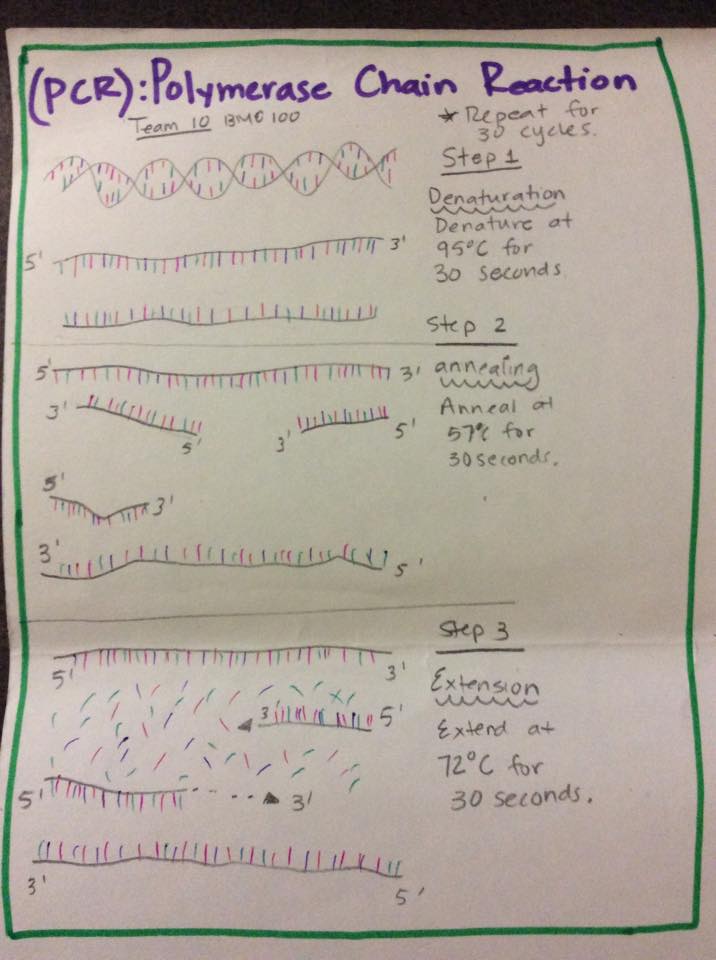BME100 s2015:Group10 12pmL4
| Home People Lab Write-Up 1 | Lab Write-Up 2 | Lab Write-Up 3 Lab Write-Up 4 | Lab Write-Up 5 | Lab Write-Up 6 Course Logistics For Instructors Photos Wiki Editing Help | ||||||||||||||||||||||||||||||||
|
OUR TEAM
LAB 4 WRITE-UPProtocolMaterials
OpenPCR program
Research and DevelopmentPCR - The Underlying Technology Denaturation: Before the DNA strands are put into the Heated lid, the template strand, the strand which has the portion to be copied, is preheated to 100C. The DNA strands are then heated to a high temperature of about 95C. After thirty seconds the hydrogen bonds weaken which hold the double helix together, at which point the bonds become so weak, the strands physically separate. The dNTP's, or deoxyribonucleotide base pairs, will be exposed and the DNA is ready for primers to be attached. Annealing: At a lower temperature, of about 50C and the time has been another thirty seconds, the primers, the starting points for copying that assist enzymes, are introduced into the mix. Since the DNA base pairs are exposed, the primers will be able to bind to specifically selected sites on the DNA. After this portion, the replication will begin. Extension: Taq polymerase, a special kind of replicating enzyme for DNA, begins to line up the new base pairs at a temperature of 72C and after another thirty seconds has passed. At this period of time, the DNA will have been doubled. The previous three steps will be repeated 35 times in order to amplify a single section of the DNA to be copied millions and millions of times. Final Elongation: The DNA is put through one last extension to ensure all the strands have matching base pairs to form complete double helices. This is done by heating the DNA to 72C and this is done for 2 minutes. Final Hold: The DNA is stored at 4C to prevent it from denaturing again.
Credit: http://en.wikipedia.org/wiki/Polymerase_chain_reaction#Procedure
| ||||||||||||||||||||||||||||||||





